Here's Our Top Selection:
- Maasai Mara Reserve
- Serengeti National Park
- Chobe National Park
- Kruger National Park
- Etosha National Park
- Volcanoes National Park
- Ngorongoro Conservation Area
- Tarangire Park
Maasai Mara National Reserve, Kenya
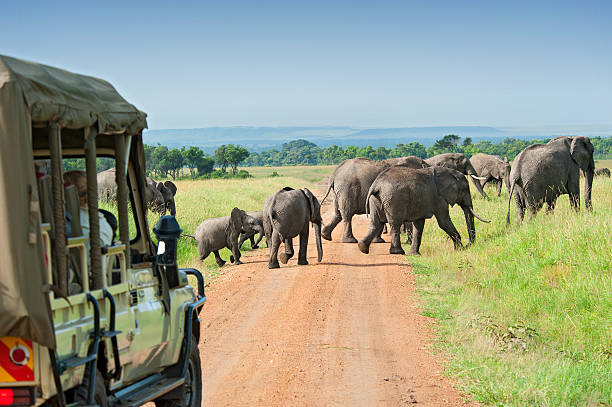
Maasai Mara s a large national game reserve in Narok, Kenya. It is one of the most famous and important wildlife conservation and wilderness areas in Africa, world-renowned for its exceptional populations of lion, African leopard, cheetah and African bush elephant. It also hosts the Great Migration, which secured it as one of the Seven Natural Wonders of Africa, and as one of the ten Wonders of the World.
The Maasai Mara is one of the most famous safari destinations in Africa. Entry fees are currently US$ 70 for adult non-East African Residents per 24 hours (if staying at a property inside the Reserve) or US$80 if outside the reserve, and $40 for children. There are a number of lodges and tented camps catering for tourists inside or bordering the Reserve and within the various separate Conservancies which border the main reserve. However, the main reserve is unfenced even along the border with Serengeti (Tanzania) which means there is free movement of wildlife throughout the ecosystem.
Game drives are the most popular activity in the Maasai Mara, but other activities include hot air ballooning, nature walks, photographic safaris and cultural experiences.
Serengeti National Park, Tanzania
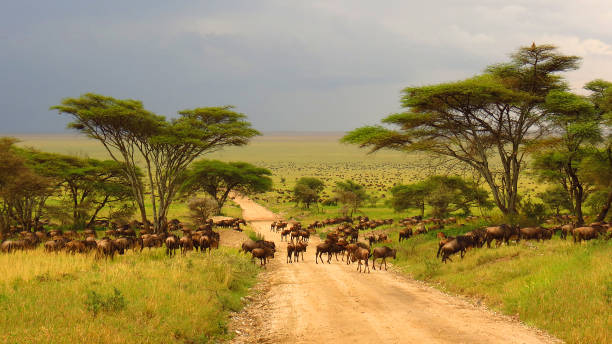
The Serengeti National Park is a large national park in northern Tanzania that stretches over 14,763 km2 (5,700 sq mi). It is well known for the largest annual animal migration in the world of over 1.5 million blue wildebeest and 250,000 zebra and the largest lion population in Africa.
The Serengeti regionitself hosts the second largest terrestrial mammal migration in the world, which helps secure it as one of the Seven Natural Wonders of Africa, and as one of the ten natural travel wonders of the world. The Serengeti is also renowned for its large lion population and is one of the best places to observe prides in their natural environment. Approximately 70 large mammal and 500 bird species are found there. This high diversity is a function of diverse habitats, including riverine forests, swamps, kopjes, grasslands, and woodlands. Blue wildebeest, gazelles, zebras, and buffalos are some of the commonly found large mammals in the region
Chobe National Park, Botswana
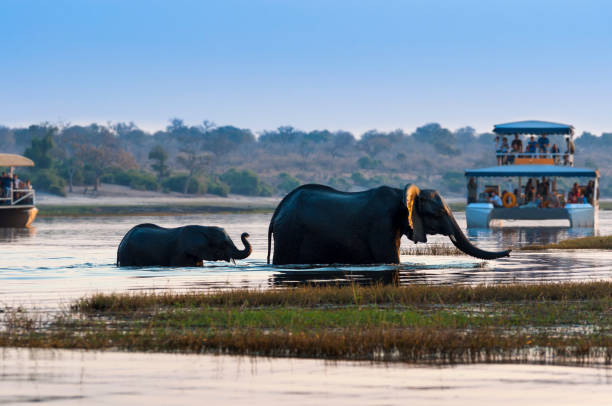
Chobe National Park is Botswana's first national park, and also the most biologically diverse. It is Botswana's third largest park, after Central Kalahari Game Reserve and Gemsbok National Park, and has one of the greatest concentrations of game in all of Africa. It is in northern Botswana near the vast, inland Okavango Delta. It's known for its large herds of elephants and Cape buffalo, which converge along the Chobe Riverfront in the dry months.
Lions, antelopes and hippos inhabit the woods and lagoons around Linyanti Marsh. The floodable grasslands of the Savuti Marsh attract numerous bird species, plus migrating zebras. This park is noted for having a population of lions which prey on elephants, mostly calves or juveniles, but also subadults
Etosha National Park, Namibia
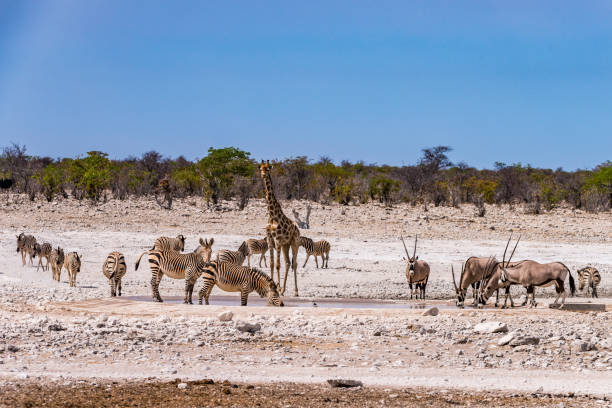
Etosha National Park is a national park in northwestern Namibia and one of the largest national parks in Africa. The area is home to hundreds of species of mammals, birds and reptiles, including several threatened and endangered species such as the black rhinoceros.
The salt pans are the most noticeable geological features in the national park. The main depression covers an area of about 5,000 square kilometres (1,900 square miles), and is roughly 130 km (81 miles) long and as wide as 50 km (31 miles) places. The hypersaline conditions of the pan limit the species that can permanently inhabit the pan itself; occurrences of extremophile micro-organisms are present, which species can tolerate the hypersaline conditions. The salt pan is usually dry, but fills with water briefly in the summer, when it attracts pelicans and flamingos in particular. In the dry season, winds blowing across the salt pan pick up saline dust and carry it across the country and out over the southern Atlantic.
Volcanoes National Park, Rwanda
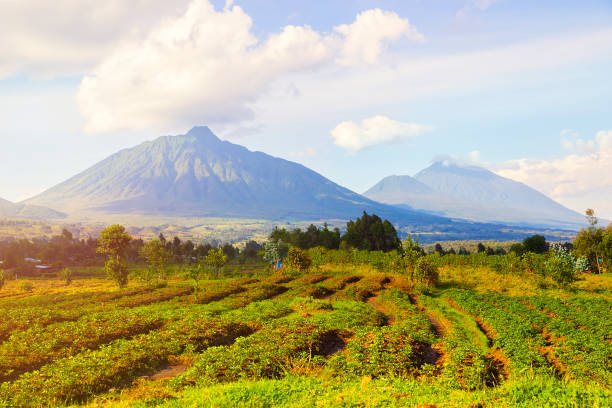
Volcanoes National Park is a national park in northwestern Rwanda. It covers 160 km2 (62 square miles) of rainforest and encompasses five of the eight volcanoes in the Virunga Mountains, namely Karisimbi, Bisoke, Muhabura, Gahinga and Sabyinyo. It borders Virunga National Park in the Democratic Republic of Congo and Mgahinga Gorilla National Park in Uganda. It is home to the mountain gorilla and the golden monkey, and was the base for the primatologist Dian Fossey.
The Volcanoes National Park has a rich mosaic of montane ecosystems, which embrace evergreen and bamboo forest, open grassland, swamp and heath.
Tarangire National Park, Tanzania
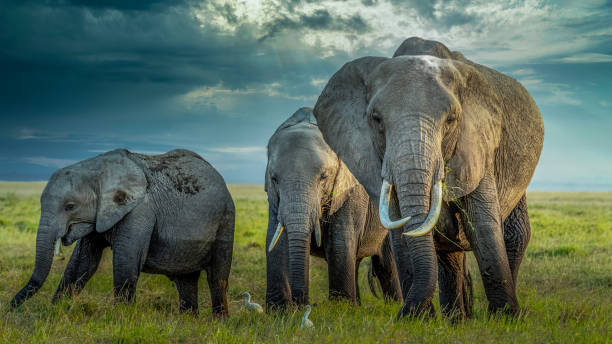
Tarangire National Park is a national park in Tanzania's Manyara Region. The name of the park originates from the Tarangire River that crosses the park. The Tarangire River is the primary source of fresh water for wild animals in the Tarangire Ecosystem during the annual dry season. The Tarangire Ecosystem is defined by the long-distance migration of wildebeest and zebras. During the dry season thousands of animals concentrate in Tarangire National Park from the surrounding wet-season dispersal and calving areas.
It covers an area of approximately 2,850 square kilometers (1,100 square miles.) The landscape is composed of granitic ridges, river valley, and swamps. Vegetation is a mix of Acacia woodland, Combretum woodland, seasonally flooded grassland, and baobab trees.
Kruger National Park, South Africa
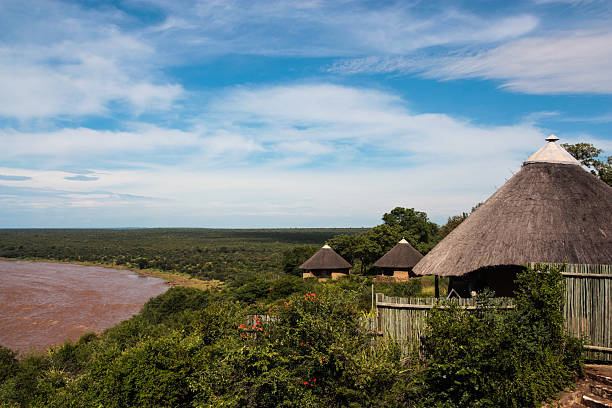
Kruger National Park is a South African National Park and one of the largest game reserves in Africa. It covers an area of 19,623 km2 (7,576 sq mi) in the provinces of Limpopo and Mpumalanga in northeastern South Africa, and extends 360 km (220 mi) from north to south and 65 km (40 mi) from east to west.
To the west and south of the Kruger National Park are the two South African provinces of Limpopo and Mpumalanga, respectively. To the north is Zimbabwe, and to the east is Mozambique. It is now part of the Great Limpopo Transfrontier Park, a peace park that links Kruger National Park with the Gonarezhou National Park in Zimbabwe, and with the Limpopo National Park in Mozambique.
Ngorongoro Conservation Area, Tanzania
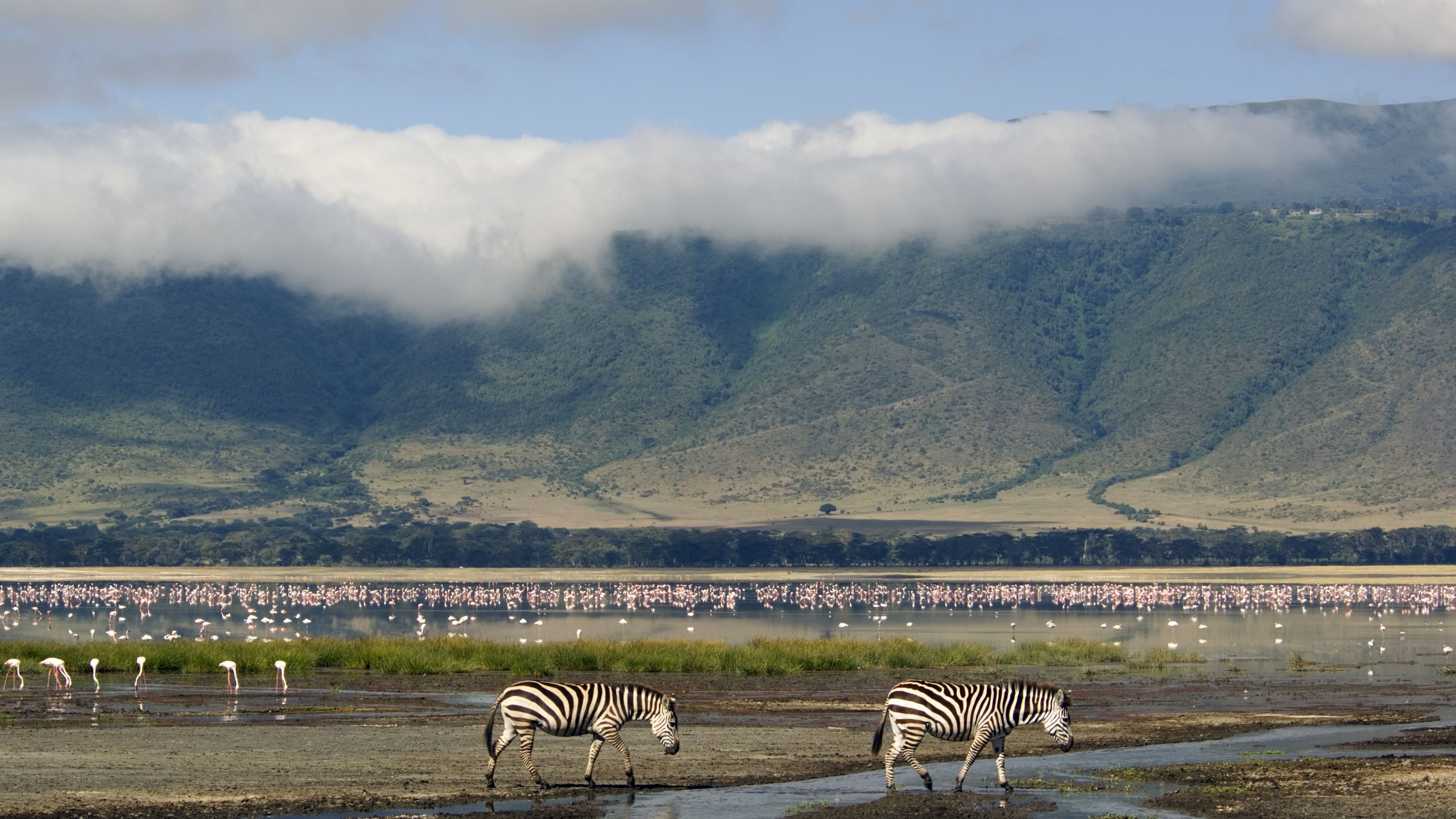
The Ngorongoro Conservation Area is a protected area and a UNESCO World Heritage Site located in Ngorongoro District, 180 km (110 mi) west of Arusha City in Arusha Region, within the Crater Highlands geological area of northern Tanzania. The area is named after Ngorongoro Crater, a large volcanic caldera within the area.
The area is part of the Serengeti ecosystem and, to the northwest, adjoins the SNP and is contiguous with the southern Serengeti plains. These plains also extend to the north into the unprotected Loliondo division and are kept open to wildlife through transhumance pastoralism practiced by the Maasai.
The main feature of the Ngorongoro Conservation Authority is the Ngorongoro Crater, the world's largest inactive, intact and unfilled volcanic caldera. The crater, which formed when a large volcano exploded and collapsed on itself two to three million years ago, is 610 metres (2,000 feet) deep and its floor covers 260 square kilometres (100 square miles). Estimates of the height of the original volcano range from 4,500 to 5,800 metres (14,800 to 19,000 feet) high. The crater floor is 1,800 metres (5,900 feet) above sea level. The crater was voted by Seven Natural Wonders as one of the Seven Natural Wonders of Africa in Arusha, Tanzania, in February 2013. The Ngorongoro volcano was active from about 2.45 to 2 million years ago.
 Obed
Obed
 Faith
Faith